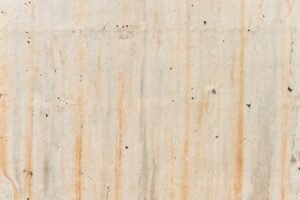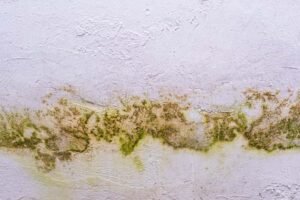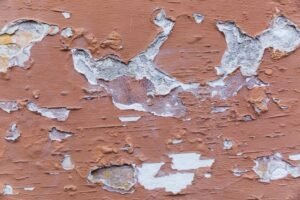Singapore’s tropical weather is a double-edged sword. While the lush greenery thrives, our roofs often bear the brunt of relentless rain, scorching sun, and high humidity. A leaking roof isn’t just an inconvenience—it’s a ticking time bomb for your home’s structural integrity and your family’s health.
But how do you know if your roof is leaking? And more importantly, what can you do to fix it before it spirals into a costly disaster?
📞 Just make a call to get a free inspection of your roofing problems if you’re a Singaporean.
BTW, here are the 5 most common signs of a leaking roof, why they happen, and how Singapore homeowners can tackle them effectively.
1. Water Stains: The Silent Culprit

Picture this: You’re sipping your kopi in the living room when you notice a faint yellow-brown patch on the ceiling. It doesn’t look like much, but it’s a telltale sign that water is seeping through your roof.
In Singapore’s humid climate, water stains often appear after heavy rain. They start small but can quickly spread, leading to peeling paint, weakened ceilings, and even electrical hazards. The culprit? Tiny cracks or gaps in your roof’s waterproofing layer.
What You Can Do:
- For Minor Stains: Clean the area and apply a waterproof sealant to prevent further damage.
- For Persistent Leaks: Call in a professional to inspect your roof. They’ll identify the source of the leak—often hidden cracks or damaged tiles—and fix it for good.
To learn more about roof waterproofing in Singapore, click here.
2. Mold Growth: More Than Just an Eyesore

Mold thrives in damp, humid environments, making Singapore a perfect breeding ground. If you spot black or green patches on your walls or ceilings, it’s a clear sign that moisture is trapped inside your home.
Mold isn’t just unsightly—it’s a health hazard. Prolonged exposure can trigger allergies, asthma, and respiratory issues, especially in children and the elderly.
What You Can Do:
- DIY Cleaning: Use a bleach-water solution to remove surface mold.
- Address the Root Cause: Mold won’t go away unless you fix the leak. A professional can seal cracks and improve ventilation to keep your home dry and mold-free.
3. Visible Cracks: Small Gaps, Big Problems

Take a closer look at your roof. Do you see hairline cracks, loose tiles, or gaps between the roofing materials? These seemingly minor issues can let rainwater seep in, causing extensive damage over time.
In Singapore, the constant exposure to UV rays and heavy rain accelerates wear and tear. What starts as a small crack can quickly escalate into a major leak.
What You Can Do:
- Quick Fix: Apply a weather-resistant sealant to small cracks.
- Long-Term Solution: For larger cracks or damaged tiles, hire a professional to reinforce your roof and prevent future leaks.
4. Peeling Paint and Bubbling Walls

Peeling paint or bubbling walls near the ceiling are often dismissed as cosmetic issues. But in reality, they’re a red flag for water damage.
When water seeps through your roof, it gets trapped under the paint or plaster, causing it to bubble and peel. Over time, this can weaken the structure of your walls and ceilings.
What You Can Do:
- Don’t Just Repaint: Fix the leak first, or the problem will keep coming back.
- Check Your Gutters: Clogged gutters are a common cause of water overflow, which can lead to leaks. Regular maintenance can save you a lot of trouble.
5. Dripping Sounds: The Final Warning
If you hear dripping sounds during or after a rainstorm, it’s a clear sign that water is entering your home. This is the most urgent warning sign, indicating a significant breach in your roof.
Ignoring this can lead to severe consequences, including collapsed ceilings, electrical hazards, and extensive water damage.
What You Can Do:
- Emergency Measures: Place buckets under the leak to catch the water and protect your furniture.
- Call a Professional: A roofing expert can quickly locate the source of the leak and repair it before it causes further damage.
Why Professional Help is Worth It
While DIY fixes can provide temporary relief, they often fail to address the root cause of the problem. In Singapore’s challenging climate, professional roof repair offers several advantages:
- Expertise: Professionals know where to look for hidden leaks and how to fix them effectively.
- Quality Materials: They use weather-resistant sealants and coatings designed to withstand Singapore’s harsh weather.
- Peace of Mind: With a warranty on their work, you can rest easy knowing your roof is in good hands.
FAQs: Roof Leaks in Singapore
How much does roof leak repair cost?
- Minor Repairs: 150–400 (e.g., sealing small cracks, patching tiles).
- Major Repairs: 800–2,500+ (e.g., replacing soaked insulation, fixing structural damage).
- Factors Affecting Cost: Roof type (HDB, condo, landed), accessibility, materials used.
Tip: Always get a detailed quote to avoid hidden fees.
Can I claim HDB insurance for roof leaks?
- Covered: Leaks due to structural faults (e.g., cracks in concrete, external damage).
- Not Covered: Wear and tear, poor maintenance, or DIY fixes gone wrong.
Steps to Claim:
- Report the issue to HDB within 7 days.
- Provide evidence (photos, inspection reports).
Why Act Fast?
Delays can complicate or void your claim.
How often should I inspect my roof?
- Recommended: Twice a year—before and after monsoon seasons (June & December).
- For Older Homes: Quarterly checks (aging roofs are more prone to damage).
What to Look For:
- Water stains or mold.
- Cracked or loose tiles.
- Peeling paint or bubbling walls.
Pro Tip: Hire a professional for a thorough inspection if unsure.
Final Thoughts
A leaking roof is more than just a nuisance—it’s a threat to your home and your family’s well-being. By spotting the signs early and taking action, you can prevent costly repairs and keep your home safe and dry.
Whether you’re dealing with water stains, mold, or visible cracks, remember that professional help is just a call away. Don’t wait until the next downpour to fix your roof. Act now, and enjoy peace of mind knowing your home is protected.

